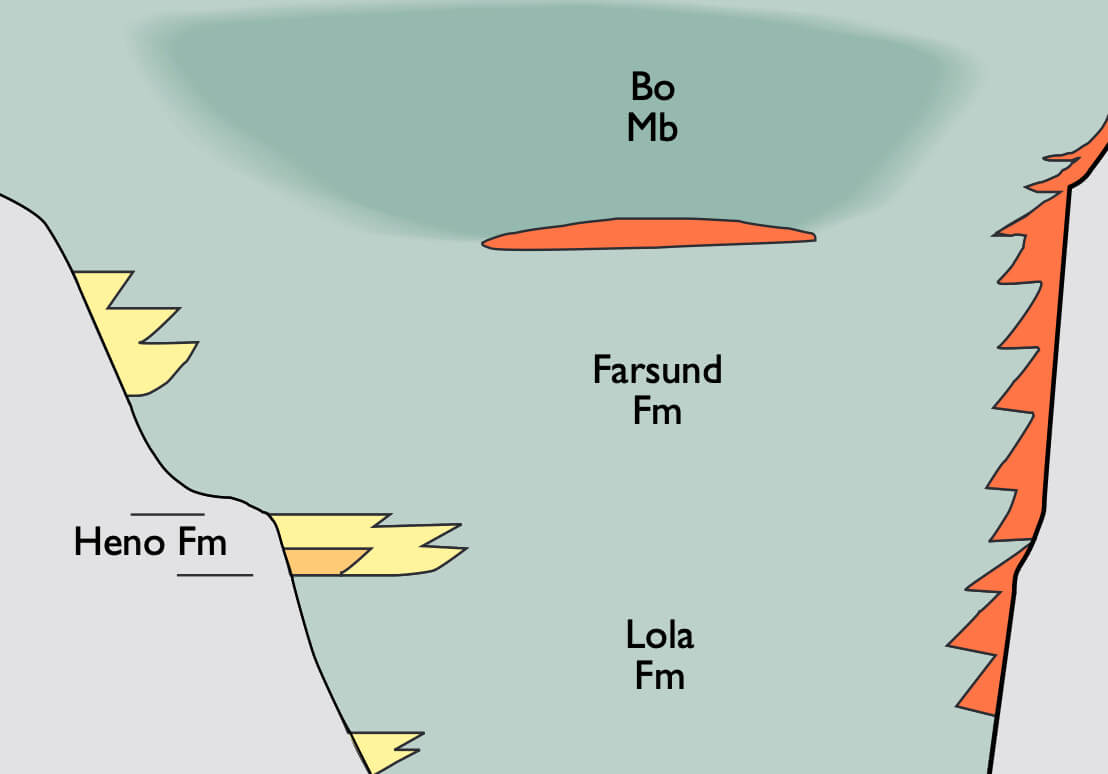
How to Cite
Share
Abstract
A sequence stratigraphic framework is established for the Jurassic of the Danish Central Graben based primarily on petrophysical log data, core sedimentology and biostratigraphic data from about 50 wells. Regional seismic lines are used to assist in the correlation of some wells and in the construction of isochore maps. In the Lower Jurassic (Hettangian–Pliensbachian) succession, five sequences have been identified. The Middle Jurassic is subdivided into four sequences that together span the uppermost Aalenian/lowermost Bajocian to the Callovian. In the Upper Jurassic, better well coverage permits greater stratigraphic resolution, and 11 sequences are identified and mapped. On the basis of the sequence stratigraphic correlation and the construction of isochore maps for individual sequences, the Jurassic basin history of the Danish Central Graben can be subdivided into seven discrete phases: (1) Shallow marine and offshore sediments deposited in a prerift basin extending from the North Sea to the Fennoscandian Border Zone (Hettangian–Pliensbachian). (2) Uplift and erosion in association with a Toarcian–Aalenian North Sea doming event. A major hiatus represents this phase in the study area. (3) Terrestrial and marginal marine sedimentation during initial rifting (latest Aalenian/earliest Bajocian – Late Callovian). (4) Early Oxfordian – Early Kimmeridgian transgression during and after a rift pulse. The sedimentary environment changed from coastal plain and marginal marine to fully marine. (5) Regression associated with a cessation or slowing of subsidence during a structural rearrangement that took place in the Late Kimmeridgian during a break in the main rift climax. Shallow to marginal marine sandstones were deposited above an erosion surface of regional extent. (6) Deep-water mudstones deposited in a composite graben with high subsidence rates related to rift pulses (latest Late Kimmeridgian – middle Middle Volgian). (7) Deposition of organic-rich mudstones and turbidite sandstones during the late Middle Volgian – Early Ryazanian. The main basin shallowed, became more symmetrical and experienced a decreasing rate of subsidence, recording the onset of the post-rift stage. A relative sea-level curve is constructed for the Middle–Late Jurassic. It shows close similarity to published eustatic (global) and relative (North Atlantic area) sea-level curves in the latest Bathonian – late Early Kimmeridgian, but differs in the Late Kimmeridgian – Middle Volgian interval, probably due to the high rate of subsidence in the study area.
How to Cite
Share
Downloads
Editors: Jon R. Ineson and Finn Surlyk
The Jurassic rocks of Denmark and East Greenland record the evolution of two discrete portions of the Mesozoic rift complex, now separated by the North Atlantic Ocean. The Jurassic of Denmark and adjacent areas occurs mostly in the subsurface and research has thus focussed [...]










